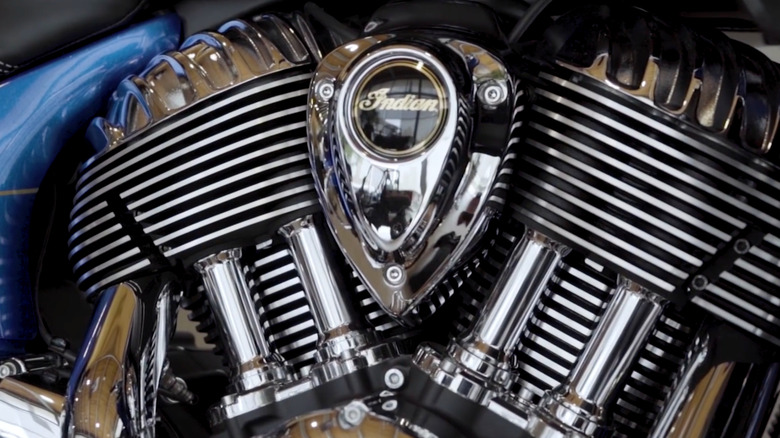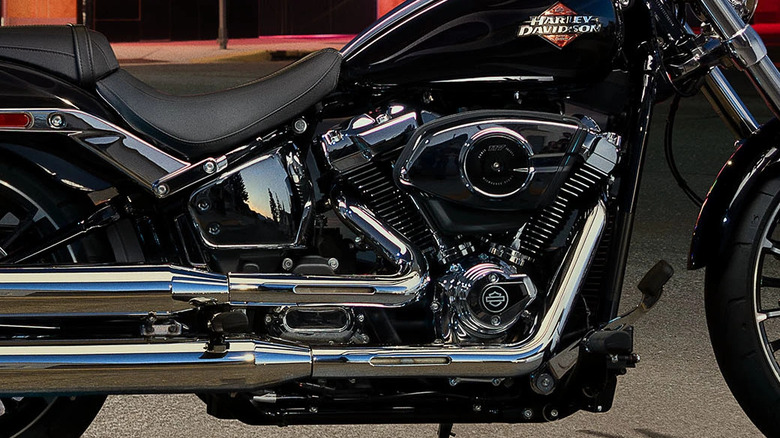Why Do Motorcycle Engines Have Fins?
While a motorcycle might have massive tires, a laid-back touring stance, or dual chrome exhaust tips, one thing often stands out – the exposed engine. Highlighted with finned cylinders, the exposed engine gives a raw mechanical appearance compared to the covered-up exterior on four-wheelers. It's the same reason a tuner car with a "roots" style blower on the hood or bumper delete with an exposed front-mount intercooler looks so much cooler and gets more eyeballs on the street.
If you are just getting into two-wheelers, you've probably wondered what those metal ridges carved on a bike's cylinder head and blocks are. Well, they are called fins – and while they might have an aesthetic feel to the overall look of a motorcycle, they actually have a functional role. The fins help increase the surface area of the engine that's exposed to air, and as a result, significantly help in cooling. The science behind the engine fins and how they help with cooling extends beyond heat dissipation, encompassing fin design, balance, and weight.
What's the functions of fins on a motorcycle engine
Liquid-cooled motorcycle engines are the new trend, having demonstrated better performance, reliability, and emissions control. Still, we can't ignore the aesthetic aspect of air-cooled engines. The finned cylinders look so cool that bike manufacturers are including non-functional finned cylinder heads on their modern liquid-cooled models solely for their aesthetic appeal. It's also worth noting that some liquid-cooled bike engines, such as Harley-Davidson's Milwaukee Eight and Revolution Max engines, also feature fins for extra cooling.
However, on models that still run air-cooled engines, the fins play a critical cooling function. Like an intercooler, the thin metal plates that make up the fins significantly increase the surface area of the engine for air to pass over as the motorcycle moves. This, in turn, helps dissipate heat from a running engine, increasing the rate of dissipation to help prevent the bike's engine from overheating.
You've probably noted that most air-cooled motorcycle engines have a similar finned design. The distinct fin design helps direct moving air around the engine, effectively cooling it down. Having fins also helps simplify engine operation by reducing the number of cooling system parts that would have otherwise required complex cooling lines and liquid, which adds to the overall weight of the bike.
The science behind motorcycle engine fins
Even though motorcycle engine technology has come a long way, air cooling still remains a simple and effective method. It's for this reason that it's still included in modern motorcycle engine cooling systems. Fins use convection heat transfer, which, simply put, is heat transfer (carrying thermal energy) from one location to the next. Therefore, the more fins an air-cooled motorcycle engine has, the more surface area it covers, which directly converts into quicker cooling.
As the motorcycle rolls down the road, the engine generates heat and transfers it into the fins attached to the cylinder heads. The fins heat up along with the engine. When air moves over them, it carries away the heat produced by the engine through convection.
Still, it's important to note that the effectiveness of the fins on an engine depends on how well the air gets to the fin surfaces. Therefore, too many or tightly spaced fins can affect airflow and ultimately, heat dissipation. As such, the engineering design becomes a crucial aspect of modeling air-cooled engines, factoring in variables like fin design, material used, size, thickness, and wind speed.


